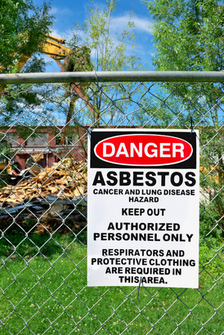 A New York bankruptcy court finally put to rest an attempt by General Motors Corp. (GM) to recoup money paid to the widow of a former long time Ohio employee who contracted mesothelioma from various GM products over his 37-year career with the auto giant. In addition to filing claims against the victim’s widow, GM attempted to recover funds paid out to the victim’s estate by several asbestos bankruptcy trusts connected to the asbestos contaminated products that allegedly played a role in the deceased auto worker’s condition.
A New York bankruptcy court finally put to rest an attempt by General Motors Corp. (GM) to recoup money paid to the widow of a former long time Ohio employee who contracted mesothelioma from various GM products over his 37-year career with the auto giant. In addition to filing claims against the victim’s widow, GM attempted to recover funds paid out to the victim’s estate by several asbestos bankruptcy trusts connected to the asbestos contaminated products that allegedly played a role in the deceased auto worker’s condition.
GM filed its lawsuit against the defendants in Henry County, Ohio, in August 2016 claiming, among other things, the auto giant made workers’ compensation payments to the sickened auto worker ranging from $2,000 to $4,000 before reaching a final disability settlement. GM argued the companies running the asbestos bankruptcy trusts owed the automaker a legal duty under Ohio law to inform any parties which may have claims to the settlements from the trusts.
GM eventually withdrew its Ohio complaint and filed claims in federal courts in Delaware, Pennsylvania, and New York but was met with stiff defence from attorneys representing those trusts. Attorneys for those entities cited a “channeling injunction” that bars claimants and bankruptcy trusts from continuing litigation related to asbestos claims. Specifically, The injunction bars “any actions against the trust for the purpose of directly or indirectly collecting, recovering, or receiving payments or recovery with respect to any asbestos-related claims, including, but not limited to, claims for subrogation.”
 Asbestos & Mesothelioma Law Blog
Asbestos & Mesothelioma Law Blog





